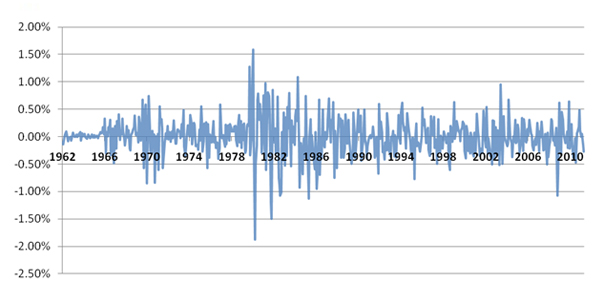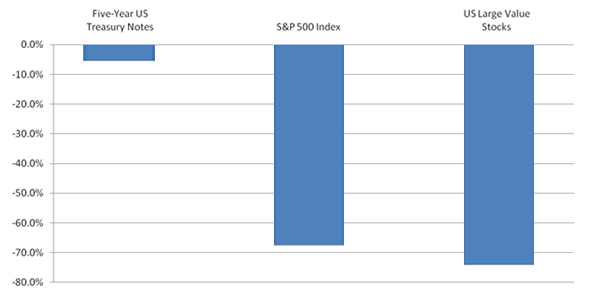People are worried bonds could experience substantial losses. With Treasury yields near record lows and mounting government deficits, many investors fear bond yields can only go up in the future. An article from Seeking Alpha takes this sentiment to the extreme by claiming bonds are so dangerous that dividend paying growth stocks are actually safer.
According to the article by Chuck Carnevale, investors in Treasuries expose themselves to extreme amounts of risk:
When interest rates rise, the prices of bonds being issued today at these low rates will fall dramatically. If today’s 3% rate on the 10-year Treasury went to a more normal 6% rate, the current market price of currently issued 10-year Treasuries could fall by as much as 40% to 50%.
Where does he get the 40% to 50% numbers? I have no idea. It is quite simple to calculate the return of a bond when interest rates change; you don’t even have to know any math. The internet provides handy calculators such as this one by Investopedia. Enter in the data from the current 10-Year Treasury bond from Bloomberg, and you get a price of $100.98. Raise the yield 3% and the price will be $78.63, a decline of 22.1%, much less than the declines Carnevale estimates.
Now, a 22% decline is still significant, it is more than most people would expect from a Treasury bond. It is important to remember that the decline applies to the market value, or the price you can sell the bond for. If you were planning on holding the bond for ten years, you would still get your 3% yield and all of the principal back. The price decline only affects the cash flows in your portfolio if you are trading in and out of the bonds before maturity.
Furthermore, an overnight 3% rise in interest rates is entirely unprecedented. Looking at 10-year treasury yields back to 1962, interest rates move by an average of 0.04% a day. The single greatest overnight change in interest rates was during a weekend in February 1980 where interest rates rose by 0.65%. Monthly interest rates, as shown in the chart below, have had more variation, but most of the interest rate volatility was in the 1970s and 80s, when interest rates were much higher on average. An increase in interest rates isn’t as painful to experience when yields are already high.
One-Month Change in Interest Rates of 10-Year Treasuries
If you’re expecting interest rates to rise over a longer time frame, then things aren’t so bad. If interest rates were to rise over the course of a year, you would have collected interest payments which mitigate some of the losses from the price decline. In fact, if you look at annual returns for 10-year Treasury notes, the worst 12-month period since 1979 was -10.01%.
At Empirical, we think 10 year Treasuries are too risky for many investors right now. Our standard bond portfolio has an average maturity close to five years. As shown below, going back all the way to 1926, the worst return for Five-year Treasuries was -5.6%. The S&P 500 index declined 67.6% during the 12 month period starting in July 1931. Value stocks, which on average have higher dividends than the S&P 500, fared even worse that same year, when they experienced a 74.2% decline.
Worst 12-Month Returns Since 1926
Hopefully, this post helped you to learn more about Treasury bonds and see that they are not as risky as stocks. In fact, they are not even in the same ballpark of riskiness. In future blog posts, I will address some other arguments for dividend paying stocks.



